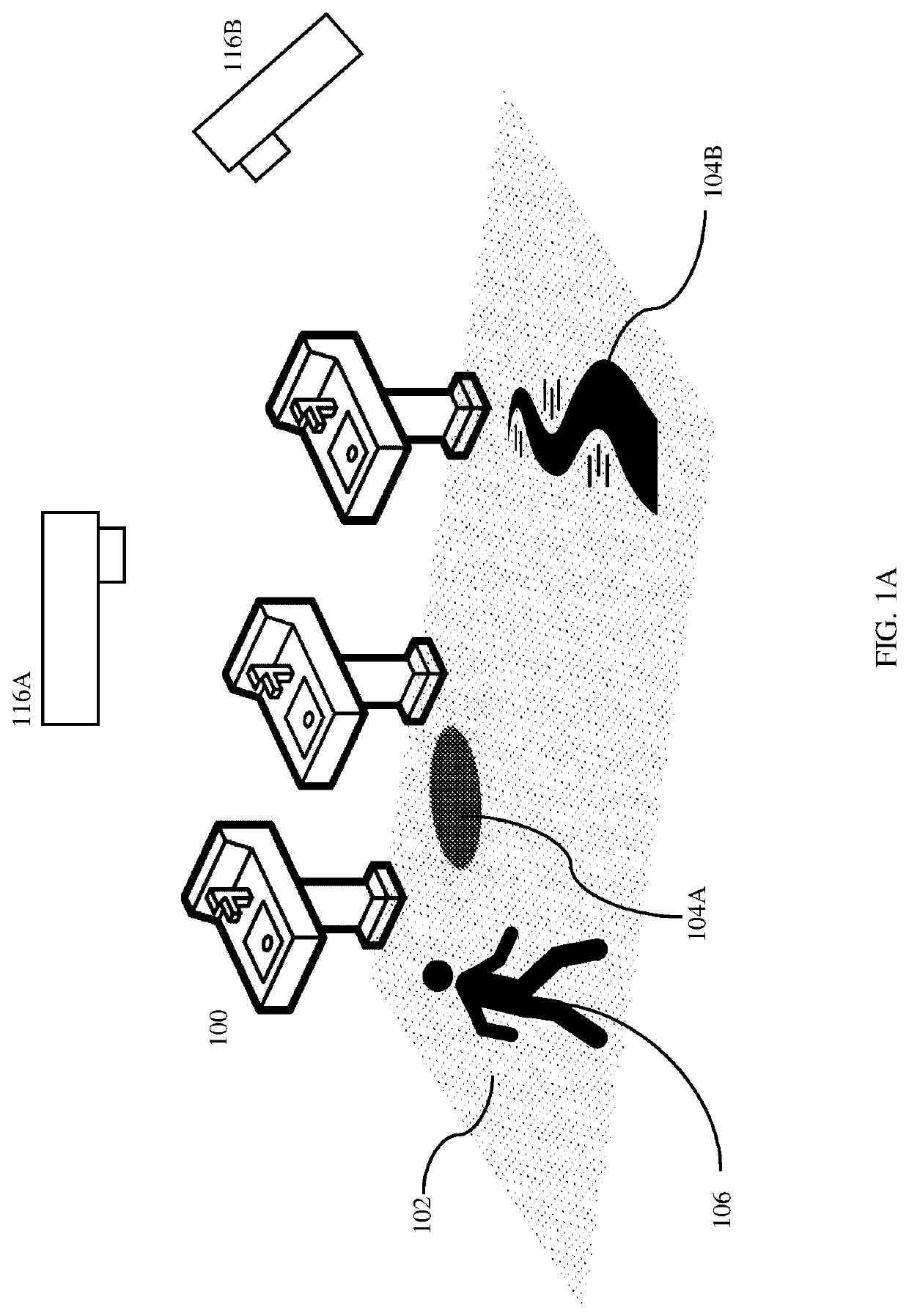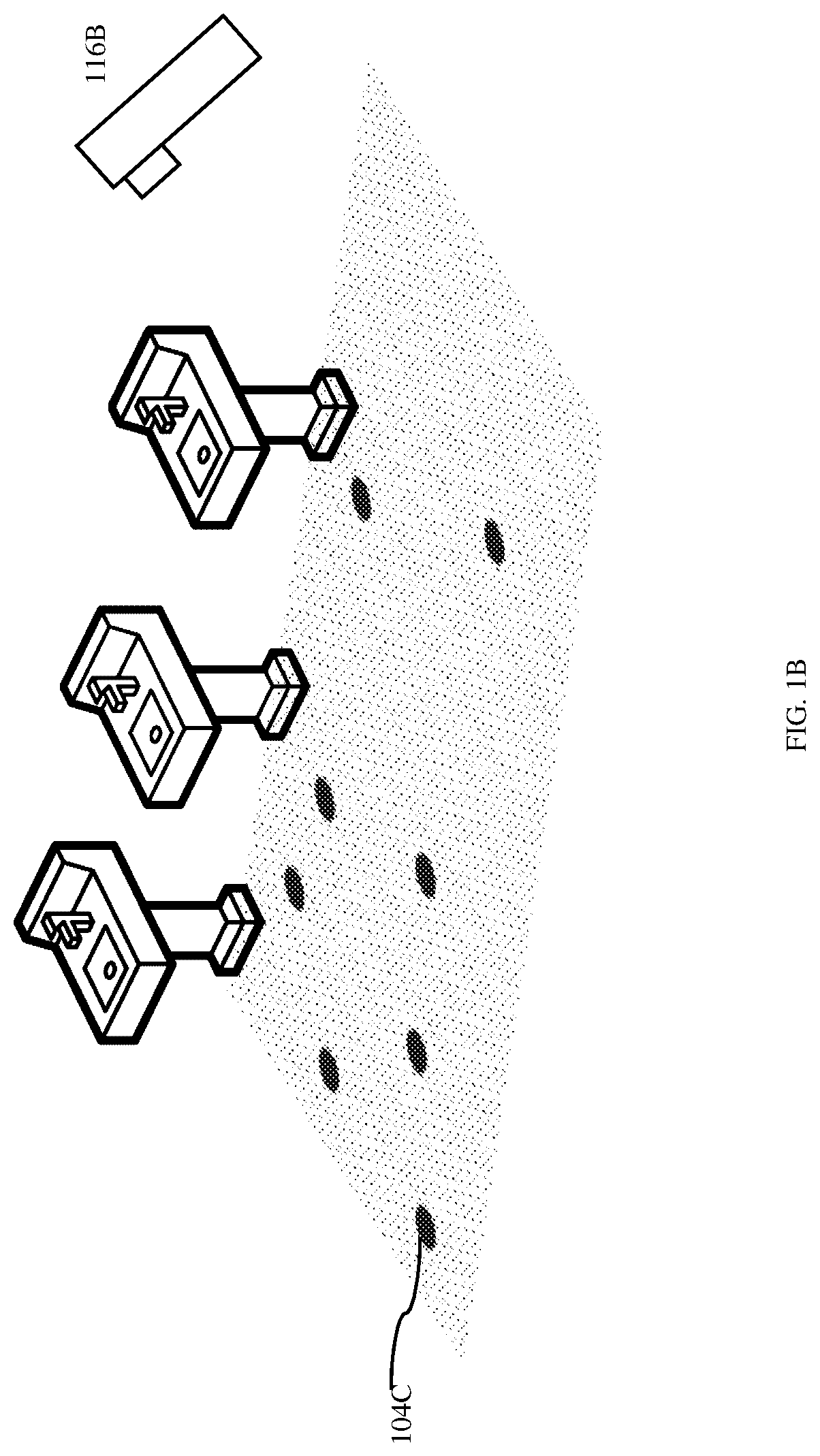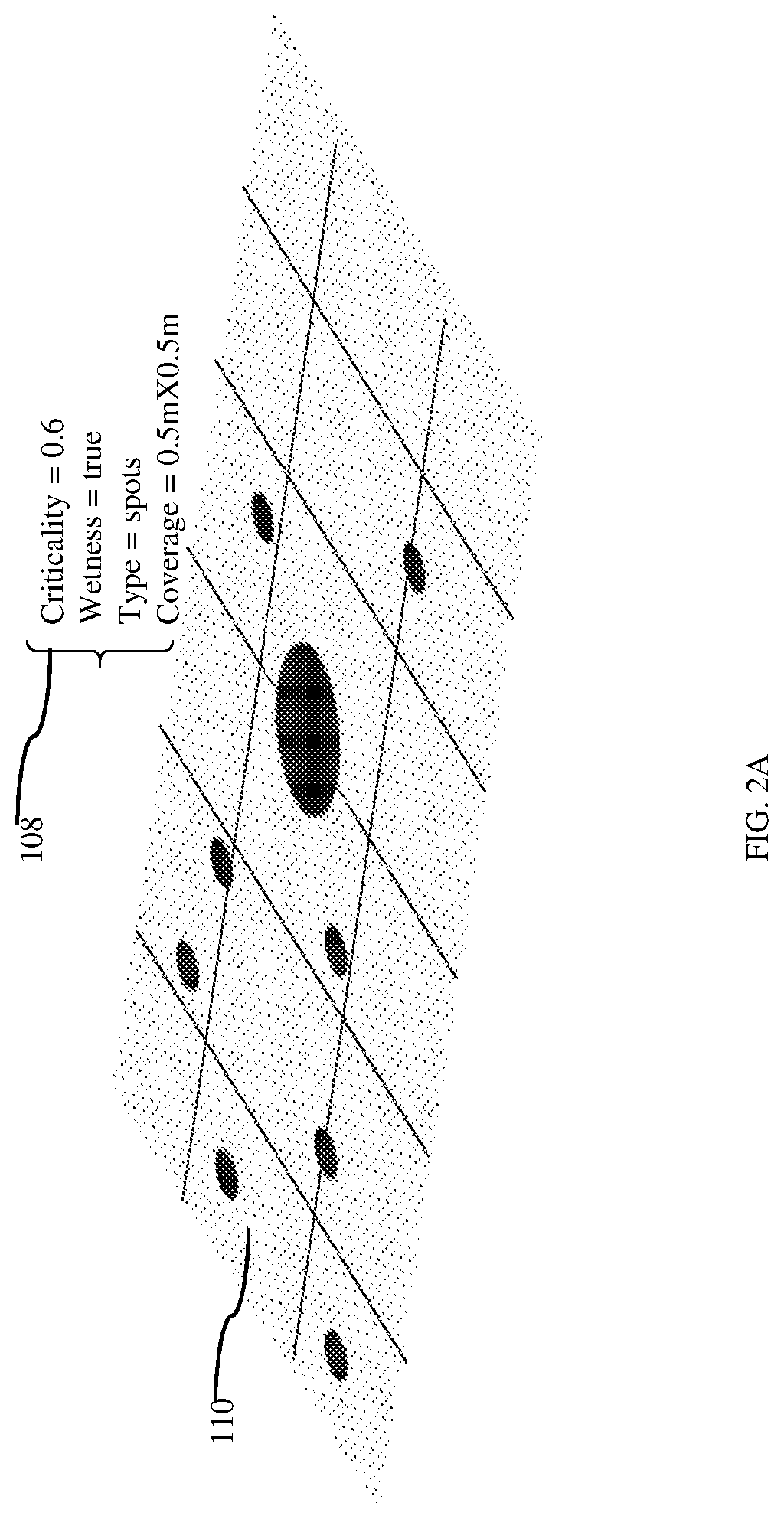System and method for non-contact wetness detection using thermal sensing
a technology of thermal sensing and non-contact wetness, applied in the field of cleaning and maintenance, can solve the problems of increasing the frequency of cleaning operations, time-consuming and expensive, and inefficient use of resources, so as to improve the efficiency and effectiveness of cleaning and maintenance services
- Summary
- Abstract
- Description
- Claims
- Application Information
AI Technical Summary
Benefits of technology
Problems solved by technology
Method used
Image
Examples
Embodiment Construction
Definitions
[0089]Reference in this specification to “one embodiment / aspect” or “an embodiment / aspect” means that a particular feature, structure, or characteristic described in connection with the embodiment / aspect is included in at least one embodiment / aspect of the disclosure. The use of the phrase “in one embodiment / aspect” or “in another embodiment / aspect” in various places in the specification are not necessarily all referring to the same embodiment / aspect, nor are separate or alternative embodiments / aspects mutually exclusive of other embodiments / aspects. Moreover, various features are described which may be exhibited by some embodiments / aspects and not by others. Similarly, various requirements are described which may be requirements for some embodiments / aspects but not other embodiments / aspects. Embodiment and aspect can be in certain instances be used interchangeably.
[0090]The terms used in this specification generally have their ordinary meanings in the art, within the con...
PUM
 Login to View More
Login to View More Abstract
Description
Claims
Application Information
 Login to View More
Login to View More - R&D
- Intellectual Property
- Life Sciences
- Materials
- Tech Scout
- Unparalleled Data Quality
- Higher Quality Content
- 60% Fewer Hallucinations
Browse by: Latest US Patents, China's latest patents, Technical Efficacy Thesaurus, Application Domain, Technology Topic, Popular Technical Reports.
© 2025 PatSnap. All rights reserved.Legal|Privacy policy|Modern Slavery Act Transparency Statement|Sitemap|About US| Contact US: help@patsnap.com



